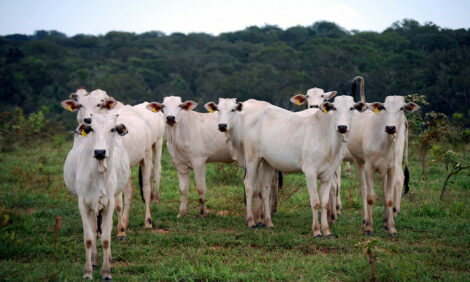



Prioritise Sucklers and Heifers When Facing Fodder Shortages
IRELAND - Irish cattlemen are being warned that special care is required this spring to avoid the knock of effects of a difficult forage year and a poor winter into spring and summer.Farmers are experiencing one of the most difficult springs ever. Cold weather followed by a period of heavy rain has limited grass production and made grazing difficult. This comes on the back of a shortage of quality fodder saved from last summer, Teagasc has noted.
There has been a general improvement in grass growth rates this week especially in the drier areas. However, most farms are starting from a low grass base. Daily grass growth rates are running at between 35 and 40 kilos of Dry Matter per hectare, around 70 per cent of normal levels.
Soil temperature has risen rapidly, and is averaging over 10 degrees this week, which should further boost grass growth rates in the coming week.
Grazing conditions on heavy soils are difficult following the recent rain. The advice from Teagasc is to keep the silage ground in for grazing and hold rotation length at around 25 days during this prolonged spell of difficult weather.
Billy Kelleher Teagasc regional advisory manager in West Cork said:”The region has been particularly badly affected. We’ve had 6 inches of rain in the past week and only seen slow recovery in grass growth in the more marginal land.
"Hay is now arriving from the UK as silage stocks on farms are exhausted. Farmers, the farm organisations along with co-ops, Teagasc and the Department of Agriculture have been working together to help farmers through this difficult time. All Teagasc offices are open for farmers to seek help and advice.”
The fodder shortage is also impacting on beef farms. Teagasc nutritionist Siobhan Kavanagh recommends that beef farmers should prioritise suckler cows with calves, and finishing stock. “These groups of livestock should get priority for available grass and it will also help to keep condition on cows for the upcoming breeding season.”
‘Replacement heifers can’t be neglected either’ said George Ramsbottom, Dairy Specialist. “Most farms I’ve been on over the past week still have some, or all of the replacement heifers indoors. Last year’s experience showed that they can be just as successfully bred indoors as outdoors. It’s important however that they’re fed well.”
The late spring and fodder situation is impacting on cash flow on many farms, and will continue to affect cash flow through the remainder of 2013. Teagasc director Professor Gerry Boyle has written to the banking federation urging that a flexible approach is adopted. Teagasc has advised farmers in this situation to take action and talk to their farm adviser and bank manager to work out a plan.
TheCattleSite News Desk

